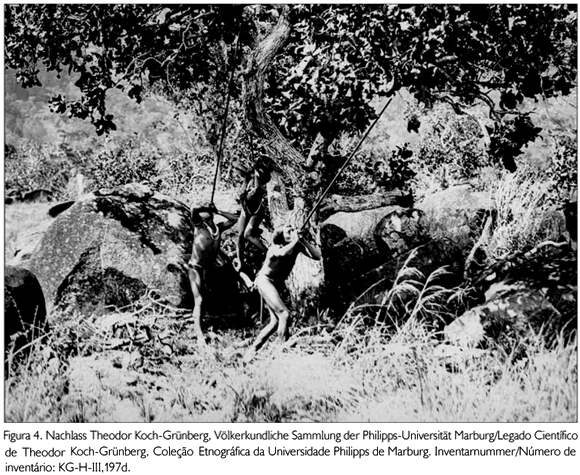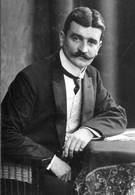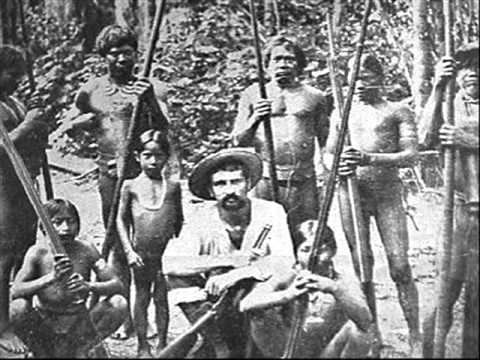Name Theodor Koch-Grunberg | ||
 | ||
Fotos Theodor Koch Grunberg
Theodor Koch-Grünberg (9 April 1872, Grünberg, Hesse, German Empire – 8 October 1924, Caracaraí, Brazil) was a German ethnologist and explorer who made a valuable contribution to the study of the Indigenous peoples in South America, in particular the Pemon Indians of Venezuela and the indigenous population of Brazil in the Amazon region. The 2015 film El abrazo de la serpiente (Embrace of the Serpent) fictionalizes his illness and final days based on his journals. He was played by actor Jan Bijvoet.
Contents

Life

After studying humanities at the University of Tübingen, he obtained a doctorate in philosophy at Würzburg with a thesis on the Guaicuru.

In 1896 he travelled to Brazil for the first time as a member of an expedition led by Hermann Meyer in search of the source of the Xingu River, a tributary of the Amazon River.
First expedition

Then from 1903–1905 he explored the Yapura River and the Rio Negro to the border with Venezuela. In 1906, he published photogravures of people he encountered on the expedition in his monumental "Indianertypen aus dem Amazonasgebiet nach eigenen Aufnahmen während seiner Reise in Brasilien" (1906).

A written account of his trip, including his study of the Baniwa, was published in two volumes in 1910-11 under the title: Zwei Jahre Unter Den Indianern. Reisen in Nord West Brasilien, 1903-1905 (Two Years Among the Indians. Travels in North-West Brazil).

He illustrated his account with photographs and his descriptions of Brazilian tribes are still used by anthropologists and ethnologists today.
Second expedition
His second major expedition started in 1911 and took him from Manaus, up the Rio Branco to Mount Roraima in Venezuela, where he documented the myths and legends of the Pemon Indians and took numerous photographs. Koch-Grünberg used the local names Arekuna and Taulipang to describe the indigenous groups he studied but these are local names for the Pemon.
He then explored the Sierra Parima, the Caura River and the Ventuari River, before reaching the Orinoco River on 1 January 1913.
After spending a short time in San Fernando de Atabapo, then the capital of Amazonas Federal Territory, he continued his journey along the Casiquiare canal, which links the Orinoco River system with the Amazon, via the Rio Negro.
He then returned to Manaus, before returning to Germany to produce his most important work: Vom Roraima Zum Orinoco (From Roraima to the Orinoco), which was published in 1917.
Diseases
In his books about his expeditions he rarely complains about the harsh conditions regarding food and shelter; he seems to endure that environment with strong health. In Two Years Among the Indians... he appears not to have taken any precaution against malaria, but does so in From Roraima to the Orinoco (page 88, German edition), where he describes how he protected himself with quinine, following a German tropical medicine handbook for lay people (A. Plehn: Kurzgefasste Vorschriften zur Verhütung und Behandlung der wichtigsten tropischen Krankheiten bei Europäern und Eingeborenen für Nichtärzte).
He was the director of Berlin's Ethnographic Museum, where many of the items he collected on his travels are stored.
Death
Koch-Grünberg died suddenly and tragically in Brazil in 1924 after contracting malaria on an expedition with the American explorer, geographer, and physician Alexander H. Rice, Jr. and the Portuguese-Brazilian cinematographer Silvino Santos to map the upper reaches of the Rio Branco.
The film of the expedition was called The Trail of El Dorado.
